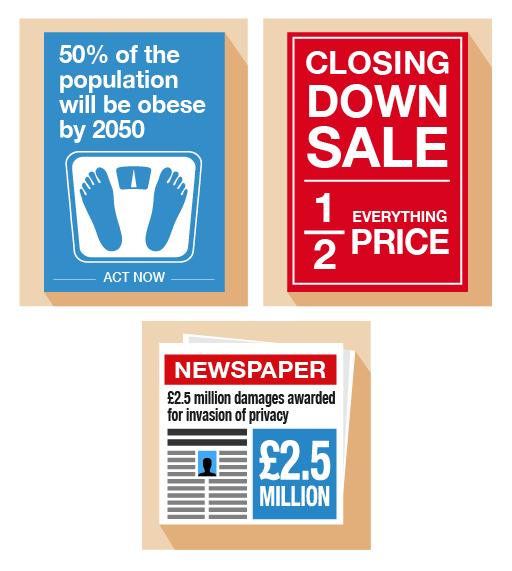6 Equivalencies between fractions, decimals and percentages
Fractions, decimals and percentages are different ways of saying the same thing. It’s an important skill to learn about the relationships (or ‘equivalencies’) between fractions, decimals and percentages to make sure you are getting the better deal.

Transcript
In this video, you’re going to look at equivalent fractions, decimals and percentages. First, let’s look at turning fractions into decimals. You have the fraction one quarter. To turn this into a decimal, you need to divide the top of the fraction by the bottom. 1 divided by 4 equals 0.25. Therefore, 0.25 is the equivalent decimal.
Let’s have a look at another fraction, three fifths. (Remember, divide the top of the fraction by the bottom.) 3 divided by 5 equals 0.6. So 0.6 is the equivalent decimal.
Now let’s try one last fraction see if you can calculate it before the answer is revealed! Two fifths: divide the top by the bottom. 2 divided by 5 equals 0.4. So the decimal is 0.4.
Now let’s use the decimals that we’ve calculated to find the percentage equivalent. A percentage is out of 100. Remember, ‘cent’ means 100. So to turn a decimal into a percentage, you need to multiply the decimal by 100.
For example, 0.25 times 100 equals 25. This is 25%.
0.6 times 100 equals 60, 60%.
0.4 times 100 equals 40. This is 40%.
Now, looking at the table, you can see how fractions, decimals and percentages relate to each other. You just need to remember the basic rules of turning a fraction into a decimal: you divide the top by the bottom, then, once you have the decimal, you can convert to per cent by multiplying by 100, remembering that ‘cent’ means 100.
Thank you for watching. Now you have a go.
Here are some common equivalencies. Try to memorise them – you will come across them a lot in everyday situations:
10% = = 0.1
20% = = 0.2
25% = = 0.25
50% = = 0.5
75% = = 0.75
100% = 1 = 1.0
Look at the following example. If you can identify equivalences, they’ll make it easier to make simple calculations.
Example: Mine’s a half
What is 50% of £200?
Method
Since 50% is the same as , so:
50% of £200 = of £200 = £100
Use the example above to help you with the following activity. Remember to check your answers once you have completed the questions.
Activity 17: Looking for equivalencies
- What is 20% of £600?
- If you walked 0.25 km each day, what fraction of a kilometer have you walked?
- House prices have increased by in the last five years. What is this increase as a percentage?
- A DIY shop is holding a ‘50% off’ sale on kitchens. How much would you pay for a new kitchen worth £8,000 in the sale?
- You buy an antique necklace for £3,000. After ten years, its value increases by 20%. How much is it now worth?
Answer
20% is the same as .
- 600 ÷ 5 = 120
So 20% of £600 is £120.
0.25 is the same as . There are 1,000 m in 1 km.
- 1,000 ÷ 4 = 250
So walking 0.25 km is the same as m, simplified to , or of a kilometre.
is the same as 50%.
So house prices have increased by 50% in the last five years.
50% is the same as .
- 8,000 ÷ 2 = 4,000
The discount is £4,000, so the cost of a new kitchen worth £8,000 in the sale is:
- £8,000 – £4,000 = £4,000
20% is the same as .
- 3,000 ÷ 5 = 600
The new value of necklace is:
- £3,000 + £600 = £3,600
Knowing the common equivalencies between fractions, decimals and percentages is important when trying to compare discounts when shopping or choosing a tariff when paying your bills.
Summary
In this section you have learned about common equivalencies between fractions, decimals and percentages.

